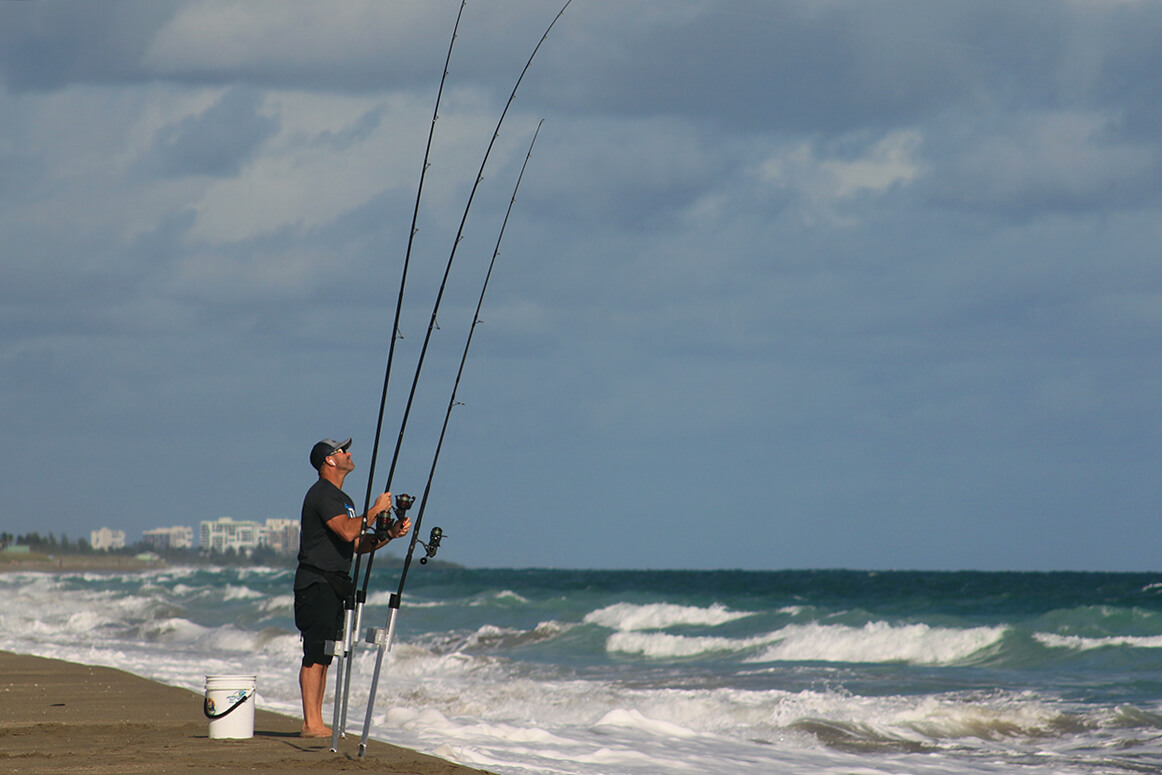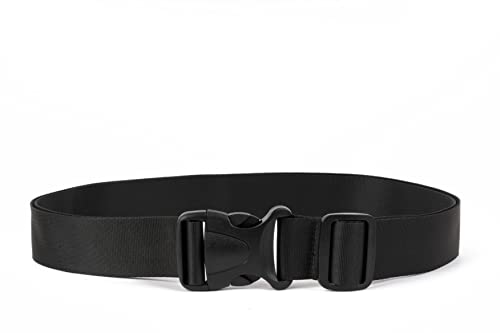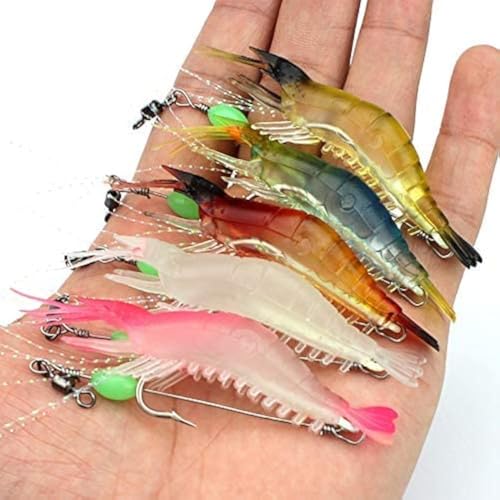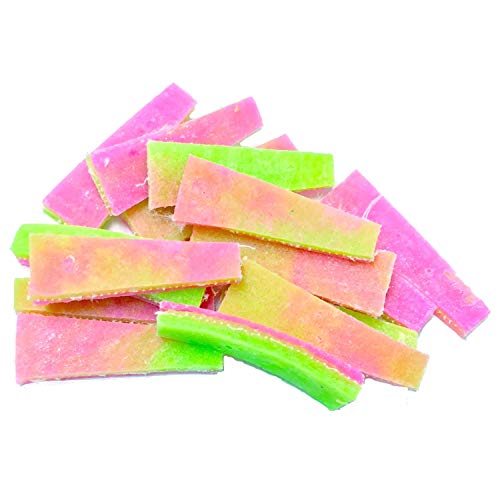To tie surf fishing rigs, start by attaching a sinker to the mainline using a sliding clip or a knot. Then, tie a swivel to the mainline above the sinker and attach a leader line to the other end of the swivel.
Finally, add your chosen hook or lure to the end of the leader line. Surf fishing rigs are essential tools for anglers who enjoy catching fish from the shoreline. These rigs consist of a combination of sinkers, swivels, leader lines, and hooks or lures.
By learning how to tie surf fishing rigs properly, you can increase your chances of success when casting your line into the surf. We will provide a step-by-step guide on tying surf fishing rigs so that you can get started with this exciting fishing technique. So, let’s dive in and learn how to tie surf fishing rigs for your next beach fishing adventure.

Credit: www.floridasportsman.com
Choosing The Right Surf Fishing Rig
Surf fishing is a popular method among anglers who enjoy fishing from the shore. To make the most out of your surf fishing experience, it is important to choose the right surf fishing rig. Understanding the different types of surf fishing rigs, considering certain factors, and following a step-by-step guide can help you select the perfect rig for your needs.
Let’s dive into these aspects to enhance your surf fishing success.
Understanding The Different Types Of Surf Fishing Rigs
There are several types of surf fishing rigs that you can use depending on your target species and fishing conditions. Here are some commonly-used surf fishing rigs:
- Fishfinder rig: This rig is designed to keep your bait at various depths to attract a wide range of fish. It features a sinker attached to a sliding rig, allowing your bait to move with the water current.
- Double-drop bottom rig: A double-drop bottom rig is great for presenting multiple baits at different depths. It consists of multiple hooks branching off a central leader line, which is attached to the mainline.
- High-low rig: Also known as a double-hook rig, the high-low rig features two hooks placed above a sinker. This rig allows you to present two baits at different levels, closely mimicking natural baitfish behavior.
- Fish finder pulley rig: The fish finder pulley rig is well-suited for rough surf conditions. It features a sliding sinker that moves with the current, reducing water resistance and preventing the rig from getting tangled.
- Three-way rig: The three-way rig is a versatile choice that allows you to fish with live bait or artificial lures. It consists of a three-way swivel, which connects the mainline, leader line, and sinker.
Factors To Consider When Selecting A Surf Fishing Rig
Choosing the right surf fishing rig requires considering several important factors. Here are some key points to keep in mind:
- Target species: Determine the species you want to catch, as different rigs are more effective for specific fish. For example, a fish finder pulley rig is suitable for larger species like striped bass, while a high-low rig is effective for bottom-dwelling fish like flounder.
- Fishing location and conditions: Consider the type of surf and bottom conditions you’ll encounter. For rocky bottoms, a three-way rig can prevent your gear from getting stuck, whereas a fish finder rig is better for sandy or muddy bottoms.
- Bait presentation: Think about how you want to present your bait. Some rigs allow you to present live bait in a natural manner, while others are ideal for using cut or artificial bait.
- Casting distance: If you need to cast your bait far into the surf, a streamlined rig like a fish finder pulley rig will provide better distance.
Step-By-Step Guide To Choosing The Perfect Surf Fishing Rig
Here is a step-by-step guide to help you choose the perfect surf fishing rig:
- Identify your target species to determine the most suitable rig.
- Assess the fishing location and conditions, considering the presence of rocks, vegetation, depth, and current.
- Decide on the bait presentation you prefer and whether you’ll be using live, cut, or artificial bait.
- Determine the casting distance required based on the surf conditions and the location of fish.
- Select the appropriate rig from the options available, such as fish finder rig, double-drop bottom rig, high-low rig, fish finder pulley rig, or three-way rig.
- Assemble the rig components including hooks, swivels, leader lines, and sinkers according to the chosen rig.
- Attach the rig to your mainline using strong and reliable knots, ensuring the rig is secure.
- Bait your hooks with the desired bait, ensuring they are securely attached.
- Test your rig by casting it into the surf and observing its behavior in the water.
- Make necessary adjustments to the rig setup, such as changing weights or hook sizes, based on the fishing conditions and bite activity.
By understanding the different types of surf fishing rigs, considering key factors, and following a step-by-step guide, you can confidently select the perfect surf fishing rig for your next shoreline angling adventure. Remember to adapt your rig choice based on the specific conditions and target species to optimize your chances of success.
Happy fishing!
Setting Up Your Surf Fishing Rig
Selecting The Ideal Rod And Reel Combination For Surf Fishing
When it comes to surf fishing, choosing the right rod and reel combination is crucial for a successful fishing experience. Consider the following key points when selecting your gear:
- Rod length: Opt for a rod with a length between 9 to 12 feet. Longer rods allow for longer casting distances, while shorter rods provide more control.
- Rod power and action: Surf fishing requires the power to handle larger fish and the flexibility to cast long distances. Look for a medium to heavy power rod with fast or moderate-fast action.
- Reel size: Match your rod with an appropriate reel size. A spinning reel with a minimum line capacity of 200 yards is recommended for surf fishing.
- Line strength: Use a monofilament or braided line that can withstand the surf conditions and the weight of potential catches. A line strength between 15 to 30-pound test is suitable for most surf fishing scenarios.
- Saltwater compatibility: Make sure both the rod and reel are designed for saltwater use. Saltwater corrosion can damage equipment not specifically built to withstand it.
Assembling Your Surf Fishing Rig
Once you have the ideal rod and reel combination, it’s time to assemble your surf fishing rig. Follow these steps to set up your gear properly:
- Attach the reel: Securely fasten the reel onto the reel seat of the rod. Make sure it is tightened enough to prevent any wobbling during casting and retrieval.
- Thread the fishing line: Begin by passing the fishing line through the rod’s line guides, starting from the tip and working towards the reel. Leave enough slack for tying knots later.
- Tie the leader: Connect a length of leader line to your main fishing line using a suitable knot, such as the improved clinch knot or the uni knot. The leader line should be slightly heavier than your main line to provide added strength and abrasion resistance.
- Attach the terminal tackle: Depending on the fishing conditions and target species, you may need to attach various terminal tackle such as hooks, sinkers, and swivels. Use appropriate knots to secure each component.
- Attach bait or lure: Once your terminal tackle is in place, add your preferred bait or lure onto the hook. Ensure it is securely attached to withstand the force of casting and potential strikes.
Adjusting The Surf Fishing Rig For Optimal Performance
To maximize your chances of success when surf fishing, properly adjusting your rig is key. Consider these tips for achieving optimal performance:
- Casting technique: Master the art of the overhead cast or the sidearm cast, depending on your preference and surroundings. Practice your casting technique to improve both distance and accuracy.
- Sink the bait: If you’re using bait, ensure it sinks to the desired depth by adjusting your sinkers accordingly. Too much weight can cause your bait to sink too quickly, while too little weight might not allow it to reach the desired depth.
- Vary your retrieve: Experiment with different retrieve speeds and patterns to entice fish. Some species prefer a slow and steady retrieve, while others are more attracted to erratic movements.
- Check the drag: Test the drag on your reel to make sure it is properly adjusted. You want it to be tight enough to tire out larger fish, but not so tight that it risks breaking your line.
- Learn to read the waves: Observing the breakers and understanding wave patterns can help you determine where fish are likely to be. Look for troughs, sandbars, and areas of wave disruption to find potential hotspots.
By selecting the right rod and reel combination, assembling your rig correctly, and making necessary adjustments, you will greatly increase your chances of success in the exciting world of surf fishing. Happy fishing!
Techniques For Effective Surf Fishing With Rigs
Surf fishing with rigs requires a combination of proper casting techniques, baiting tips, and retrieval techniques to attract the target fish species. Whether you’re a beginner or an experienced angler, mastering these techniques will significantly enhance your chances of success in the challenging surf fishing environment.
Casting Techniques For Maximum Distance And Accuracy:
- Use a long surf fishing rod with appropriate weight and action to ensure casting distance and accuracy.
- Apply the overhead cast technique for maximum distance, where you sweep the rod back, then bring it forward quickly, releasing the line at the optimal moment.
- Utilize the sidearm cast technique for increased accuracy, especially when targeting specific spots or structures in the surf zone.
- Proper timing is crucial – release the line just as the rod reaches its maximum flex to achieve maximum distance.
- Maintain a smooth follow-through motion to prevent line tangling and to add distance to your cast.
Baiting Tips And Tricks For Surf Fishing Success:
- Choose bait based on the target fish species and the prevailing conditions. Live bait, such as shrimp, mullet, or sand fleas, often produces excellent results.
- Ensure that your bait is secure on the rig by using bait holder hooks, rubber bands, or thread. This prevents fish from stealing your bait without getting hooked.
- Experiment with different bait presentations, such as using whole baitfish, cut bait, or chunks, to entice a wider range of fish species.
- Consider adding scent attractants, like fish oils or artificial scents, to enhance the appeal of your bait and attract nearby fish.
- Regularly check and re-bait your hooks to keep your presentation fresh and appealing.
Retrieval Techniques To Attract Target Fish Species:
- Vary your retrieval speed and technique to mimic different prey movements and entice the target fish. Slow, steady retrieves work well for some species, while erratic retrieves may be more effective for others.
- Utilize a stop-and-go retrieve to imitate injured or fleeing prey, which can trigger predatory instincts in fish.
- Keep an eye on the surf conditions and adjust your retrieval technique accordingly. In rougher waters, a more aggressive technique might be necessary to cut through the waves and attract fish’s attention.
- Pay attention to the feedback from your lure or bait during retrieval. If you notice any hits or taps, be prepared to set the hook quickly.
By incorporating these casting, baiting, and retrieval techniques into your surf fishing rig setup, you’ll greatly increase your chances of attracting and hooking into the target fish species. Remember to adapt your approach based on the specific conditions and target species, and stay patient and persistent to achieve greater success on your next surf fishing adventure.
Conclusion
Mastering the art of tying surf fishing rigs is essential for any angler looking to have a successful day on the water. A well-tied rig will increase your chances of catching fish and provide you with the confidence to cast out into the surf.
Remember to choose the right rig for the conditions you are fishing in, whether it’s a basic fish-finder rig or a more complex pompano rig. Take the time to learn the proper techniques for tying each component of your rig, such as the leader, swivels, and hooks.
Practice tying your rigs before you head out on your fishing trip to ensure you are comfortable and efficient. Finally, always check your rig for any signs of wear or damage and make any necessary repairs or replacements. With these tips in mind, you’ll be well-equipped to have a successful and enjoyable surf fishing experience.
Happy fishing!






